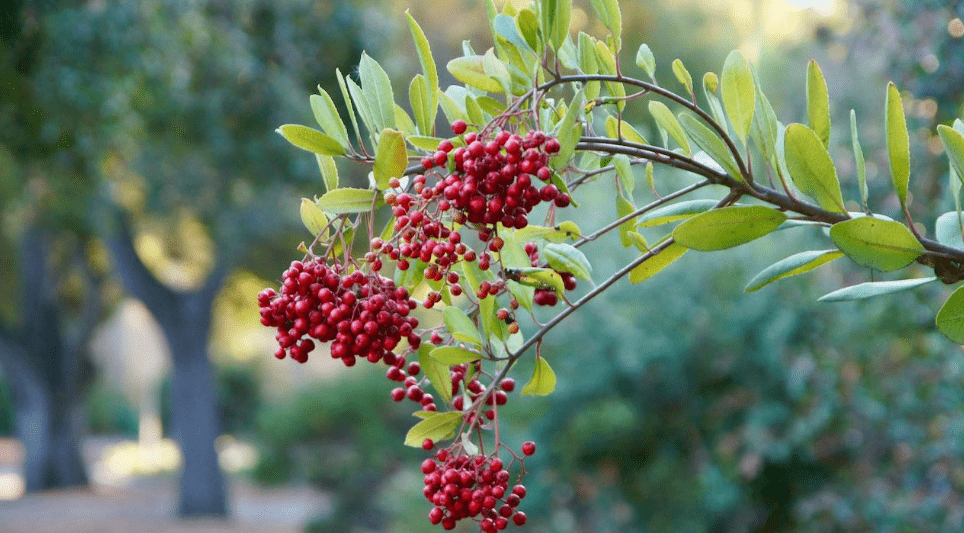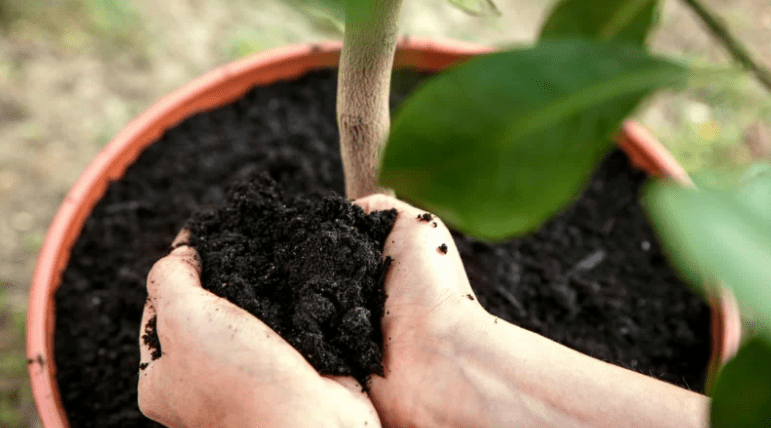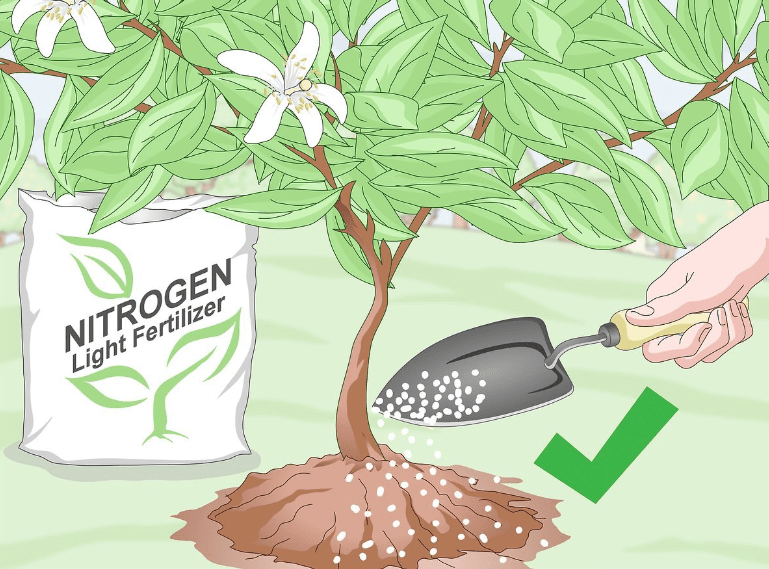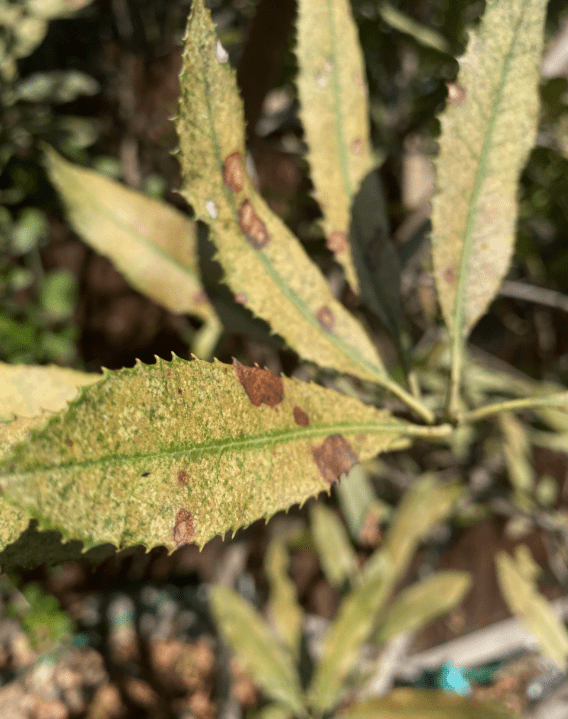
Discover the Beauty and Benefits of the Toyon Tree
The Toyon tree, also known as California Holly, is a beautiful and versatile tree that holds ecological, landscaping, and cultural significance. In this post, we will explore the beauty and benefits of the Toyon tree, including its importance in the environment, its uses in landscaping, and its cultural significance. Whether you’re a nature enthusiast, a landscaper, or simply curious about unique trees, this post will provide you with valuable insights into the Toyon tree.
Table of Contents
ToggleBotanical Description
1.Scientific classification
The Toyon tree, also known by its scientific name Heteromeles arbutifolia, is a species of flowering plant in the rose family, Rosaceae. It is native to the western United States and Baja California in Mexico. The tree typically grows up to 6-8 meters in height and has dense, evergreen foliage with glossy, dark green leaves. It produces clusters of small white flowers in the spring, which are followed by bright red berries in the winter, making it a popular choice for ornamental landscaping. The berries are a valuable food source for birds and other wildlife, and the tree also provides important habitat and shelter for various animal species. In addition to its ecological benefits, the Toyon tree has cultural significance, as it is the namesake of the city of Hollywood in Los Angeles, California. It has also been used in traditional Native American medicine and has inspired literary works, making it a truly unique and multifaceted tree.
2.Physical characteristics (leaves, bark, flowers, berries)
The leaves of the Toyon tree are glossy and dark green, and the tree has a dense, evergreen foliage. It produces clusters of small white flowers in the spring, which are followed by bright red berries in the winter. The berries are a valuable food source for birds and other wildlife, and the tree also provides important habitat and shelter for various animal species. The bark of the Toyon tree is smooth and reddish-brown in color. Overall, the physical characteristics of the Toyon tree make it a popular choice for ornamental landscaping and a valuable resource for wildlife.
Historical and Cultural Significance
1.Indigenous uses and folklore
The Toyon tree has been used in traditional Native American medicine, with various parts of the tree being used to treat ailments such as colds, fevers, and stomach pains. In addition, the tree has cultural significance for indigenous peoples, with some tribes using the branches and berries in various ceremonies and rituals. The tree also has folklore surrounding it, with some Native American tribes believing that the Toyon tree has spiritual powers and is a symbol of protection and healing. Overall, the Toyon tree has a rich history of indigenous uses and folklore.
2.Historical uses (medicinal, culinary)
European settlers also recognized the medicinal qualities of the Toyon tree, using it to make teas and tonics for colds and other ailments. In addition, the berries were used to make a tart jelly, similar to cranberry sauce. The Toyon tree has also been utilized for its wood, which is sometimes used for making tools and other objects. Overall, the historical uses of the Toyon tree in both indigenous and settler cultures have made it an important and versatile resource.

3.Cultural symbolism and representation
The Toyon tree holds cultural symbolism and representation in various ways. It is California’s official native plant and has been referred to as “California Holly” due to its resemblance to traditional holly plants. The tree is also prominent in literature, art, and local traditions, and is often associated with the holiday season in California. In addition, the Toyon tree is a symbol of resilience and adaptability, as it is able to thrive in a variety of environments and provide valuable resources for wildlife. Overall, the Toyon tree holds significant cultural symbolism and representation in both indigenous and modern contexts.
Habitat and Distribution
1.Native range (geographical distribution)
The Toyon tree is native to California and can be found in a variety of habitats, including coastal scrub, chaparral, and oak woodlands. It is also found in parts of Oregon and Baja California. The tree thrives in a Mediterranean climate, characterized by hot, dry summers and mild, wet winters. Its distribution is primarily limited to the western coastal region of North America. Overall, the Toyon tree has a relatively small native range, but it is an important and iconic species within its habitat.
2.Preferred climate and soil conditions
The Toyon tree is native to California and thrives in a Mediterranean climate, with hot, dry summers and mild, wet winters. It can be found in coastal scrub, chaparral, and oak woodlands. The tree is also able to adapt to a variety of soil conditions, including well-drained, loamy, or sandy soils. It is a resilient and adaptable species that can thrive in a range of environments, making it an important and valuable species within its native habitat.
3.Common environments where it thrives (coastal areas, chaparral, etc.)
The Toyon tree is native to California and can be found in a variety of habitats, including coastal scrub, chaparral, and oak woodlands. It is also found in parts of Oregon and Baja California. The tree thrives in a Mediterranean climate, characterized by hot, dry summers and mild, wet winters. Its distribution is primarily limited to the western coastal region of North America. Overall, the Toyon tree has a relatively small native range, but it is an important and iconic species within its habitat. It can adapt to a variety of soil conditions, including well-drained, loamy, or sandy soils. It is a resilient and adaptable species that can thrive in a range of environments, making it an important and valuable species within its native habitat.
Ecological Role
1.Importance in local ecosystems
The Toyon tree plays an important role in local ecosystems. Its berries are a crucial food source for birds and small mammals, especially during the winter when other food sources may be scarce. The dense foliage also provides habitat and cover for wildlife. Additionally, the deep roots of the Toyon tree help prevent soil erosion and contribute to the overall stability of the ecosystem. Overall, the presence of the Toyon tree is essential for maintaining biodiversity and ecological balance within its native habitat.
2.Benefits to wildlife (birds, insects, mammals)
The Toyon tree provides important benefits to wildlife within its native habitat. Its berries are a vital food source for a variety of bird species, including robins, cedar waxwings, and mockingbirds, as well as small mammals such as raccoons and coyotes. Insects are also attracted to the flowers of the Toyon tree, providing an important food source for insect-eating birds and other wildlife. The dense foliage of the tree also provides shelter and nesting sites for birds and small mammals, contributing to the overall health and diversity of the local wildlife population.
3.Role in erosion control and soil health
The deep roots of the Toyon tree play a critical role in erosion control and soil health. By anchoring the soil, these roots help prevent erosion and stabilize slopes, especially in areas with steep terrain. Additionally, the presence of the Toyon tree contributes to overall soil health by improving water retention and nutrient cycling. This helps support the growth of other plants and contributes to the overall stability and health of the ecosystem. Overall, the role of the Toyon tree in erosion control and soil health is essential for maintaining the stability and ecological balance of its native habitat.
Planting and Growing Toyon Trees
1.Selecting the right location
When planting a Toyon tree, it is important to select a location that provides adequate sunlight and well-drained soil. The tree thrives in full sun to partial shade and prefers sandy or loamy soil. It is also important to consider the mature size of the tree and ensure that it will have enough space to grow without overcrowding other plants or structures.
2.Soil preparation and planting techniques
Soil preparation and planting techniques are crucial for ensuring the successful growth of Toyon trees. Prior to planting, it is important to prepare the soil by loosening it and adding organic matter to improve drainage and fertility. The hole for planting should be dug to the depth of the root ball and two to three times wider. Once the tree is planted, it should be watered thoroughly to help establish the root system. Mulching around the base of the tree can help retain moisture and suppress weeds.

3.Watering, mulching, and fertilization
After planting, Toyon trees should be watered regularly, especially during dry periods, to ensure proper establishment and growth. Mulching around the base of the tree can help retain moisture and suppress weeds, which is especially important during the tree’s early years. Fertilization may be necessary if the soil is deficient in nutrients, but it is important to follow recommended guidelines to avoid over-fertilizing and causing harm to the tree.
Overall, proper selection of location, soil preparation, and ongoing care are essential for the successful planting and growth of Toyon trees. They play a crucial role in erosion control and soil health, making their cultivation important for maintaining the stability and ecological balance of their native habitat.

Care and Maintenance
1.Pruning and shaping tips
Toyon trees generally require minimal pruning, but any dead or damaged branches can be removed as needed. Shaping can be done to maintain a desired form or size, but it is important to avoid excessive pruning, as this can stress the tree and affect its overall health. It is best to prune in late winter or early spring before new growth begins. When pruning, it is important to use sharp, clean tools to prevent damage to the tree. Overall, proper care and maintenance, including regular watering, mulching, and minimal pruning, can help ensure the health and longevity of Toyon trees in the landscape.
2.Pest and disease management
Toyon trees are generally resistant to pests and diseases, but occasional issues may arise. Regular inspection of the tree for signs of infestation or disease is important in catching and addressing any issues early. Insecticidal soaps or horticultural oils can be used to control pests such as aphids or scale insects, while proper watering and overall tree health can help prevent diseases such as powdery mildew. In some cases, professional assistance from arborists or horticulturists may be necessary to effectively manage more severe pest or disease issues. Overall, maintaining the health and vigor of the tree through proper care and maintenance is the best defense against pests and diseases.

3.Seasonal care guide (spring, summer, fall, winter)
Spring: In the spring, Toyon trees may benefit from a light pruning to remove any dead or damaged branches and promote new growth. It is also a good time to apply a balanced fertilizer to support healthy growth and flowering. Regular watering is important, especially as the weather warms up.
Summer: In the summer, Toyon trees may require increased watering, especially during hot and dry periods. Mulching around the base of the tree can help retain moisture and regulate soil temperature. It is important to monitor for signs of pests and diseases and address any issues promptly.
Fall: In the fall, Toyon trees may produce bright red berries, which can provide food for wildlife. It is important to continue regular watering and monitor for any signs of stress or disease. It may also be beneficial to apply a layer of mulch to protect the roots during the colder months.
Winter: In the winter, Toyon trees may benefit from minimal pruning to maintain their shape and size. It is important to avoid heavy pruning during this time, as it can stress the tree. Proper watering and protection from extreme cold or frost can help ensure the health of the tree during the winter months.
Propagation Methods
1.Seed propagation
Toyon trees can be propagated from seeds, which can be collected from the red berries in the fall. To propagate from seeds, the seeds can be planted in well-draining soil and kept moist until they germinate. It is important to provide adequate sunlight and protection from extreme temperatures during the germination process. Keep in mind that it may take several years for the seedlings to reach maturity and begin producing berries.
2.Cutting propagation
Toyon trees can also be propagated from cuttings. This method involves taking a 4-6 inch cutting from a healthy, mature Toyon tree and planting it in a pot with well-draining soil. The cutting should be placed in a warm, sunny location and kept consistently moist until roots begin to form. Once roots have developed, the cutting can be transplanted into the ground. This method can be a faster way to propagate Toyon trees compared to seed propagation.
3.Layering and other techniques
Toyon trees can also be propagated through layering, which involves bending a low-hanging branch to the ground and covering it with soil to encourage root growth. Other techniques include grafting and tissue culture, which are more advanced methods typically used by professional growers and nurseries. These methods can be more complex and require specific skills and equipment, but can be effective for propagating Toyon trees with desired characteristics. Overall, there are several propagation methods available for Toyon trees, each with its own advantages and considerations.
Landscaping Uses
Toyon trees are often used in landscaping for their attractive berries, evergreen foliage, and ability to attract birds and wildlife. They can be used as screening plants, focal points in a garden, or as part of a native plant garden. Toyon trees can also be pruned into a hedge or trained into a small tree, making them versatile for various landscaping uses. Additionally, their drought tolerance and low maintenance requirements make them a popular choice for sustainable landscaping.
Benefits and Uses
1.Ornamental value (aesthetic appeal)
Toyon trees have ornamental value due to their attractive berries and evergreen foliage, making them a popular choice for landscaping. They can be used as focal points in a garden, as screening plants, or as part of a native plant garden, and can also be pruned into a hedge or trained into a small tree. Additionally, their ability to attract birds and wildlife adds to their appeal in landscaping. Their drought tolerance and low maintenance requirements also make them a sustainable choice for landscaping.
2.Environmental benefits (carbon sequestration, habitat provision)
Toyon trees provide environmental benefits such as carbon sequestration and habitat provision. They are able to sequester carbon from the atmosphere, helping to mitigate climate change. Additionally, they provide food and shelter for birds and wildlife, contributing to the overall biodiversity of an area. By choosing Toyon trees for landscaping, individuals can support the local ecosystem and contribute to environmental conservation efforts.
3.Practical uses (berries, leaves, wood)
Toyon trees have practical uses as well. Their bright red berries are edible and can be used to make jams and jellies, while the leaves can be used in floral arrangements and wreaths. The wood of the Toyon tree is also strong and durable, and can be used for woodworking or crafting. These practical uses add to the overall value of the Toyon tree in landscaping and sustainable living.
Challenges and Considerations
There are some challenges and considerations to keep in mind when considering Toyon trees for landscaping. They can be susceptible to certain pests and diseases, so proper care and maintenance is important to keep them healthy. Additionally, the bright red berries of the Toyon tree can be toxic if consumed in large quantities, so it’s important to be mindful of their placement in areas with children or pets. Overall, with proper care and consideration, Toyon trees can be a valuable and sustainable addition to landscaping.
In conclusion, the Toyon tree is a beautiful and versatile tree that offers a range of benefits, from providing food and habitat for wildlife to adding aesthetic value to landscaping. Its cultural significance and ecological importance make it a valuable addition to any environment. Whether you’re a nature enthusiast or a landscaping professional, the Toyon tree is definitely worth learning more about and considering for your own outdoor spaces.
Frequently Asked Question
The Toyon tree, also known as Christmas berry or California holly, is a native plant to California and parts of North America. It is known for its bright red berries and evergreen leaves, making it a popular choice for holiday decorations.
The Toyon tree provides important habitat and food for wildlife, including birds and small mammals. Its berries are a food source for many animals, and its dense foliage provides shelter and nesting sites.
Yes, Toyon trees are popular ornamental plants and can be planted in gardens and landscapes. They are drought-tolerant and low-maintenance, making them a great choice for California gardens.
Yes, Toyon berries are edible and can be used to make jams, jellies, and teas. However, it is important to note that the seeds and leaves of the Toyon tree are toxic, so caution should be taken when consuming the berries.
Toyon trees typically bloom in late spring to early summer, producing clusters of small white flowers. These flowers are followed by the bright red berries that are characteristic of the tree.
Toyon trees can grow up to 15-25 feet tall and have a dense, rounded shape. They can be pruned to maintain a smaller size if desired.
Yes, Toyon trees are well-adapted to dry conditions and are considered drought-resistant once established. This makes them a great choice for water-wise landscaping in California and other arid regions.
Yes, Toyon trees are known for attracting a variety of wildlife, including birds, butterflies, and bees. Planting a Toyon tree can help create a biodiverse and vibrant garden ecosystem.
